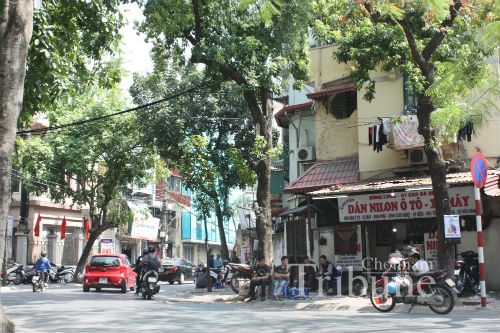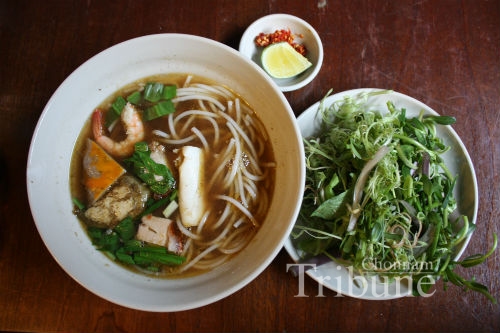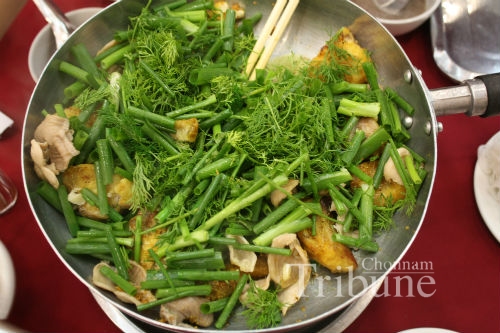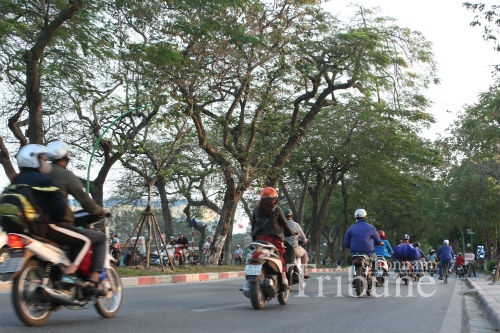
You know you drool over the thoughts of home food after a long trip away. Walking down the streets in Vietnam, I see all my reminiscences of aromatic home food, echoes of hectic street restaurants, and the distinctive culture of my people come to life. Not only what one eats but also the combination of the cultural narratives and historic records behind what one eats tell greatly about one’s roots and identity. Unarguably, nothing is more tempting than learning all these things through big bites of succulent food.
Saigon – the City of Southern Excitement
“Is it okay to call it Saigon?” – A question raised by international friends, who thought the name Ho Chi Minh is considered more appropriate. The name change was partly due to the victory of the North over the South. Genuinely, many locals still say Saigon because of their considerable sentimental attachment to it.
Known as the sleepless city, Saigon amazes visitors with its constant movement, the bustling harmony, and the widest diversity of both Vietnamese and international cuisine. French bakeries, cheese hamburgers, Italian spaghetti, bún bò Huế (beef noodle from Hue city), or phở Hanoi (rice noodle soup) are ubiquitous. Among those, Saigon’s specialities cơm tấm and bún mắm undoubtedly stand out.
 | ||
“Cơm” means rice, “tấm” is the grain type, holding most nutrients of the rice plant. Even if one is not a BBQ eater, the smokiness of grilled pork ribs of the dish is irresistible. One bite of the crispy, yet tender meat, and alluring aroma reveals its rich seasoning and wonderful flavour. Accompanying our meat buddy is chả, an assemblage of minced pork, vermicelli, and peziza mushroom. Adding shredded crunchy pig skin, or bì, to your serving is optional. Every bite of this trio, Tấm rice and fish sauce mixed with garlic and chilly placed on the side will make one so pleased that they chose this Saigon dish.
Saigon always renews your appetite while you are eating one dish with the constant allure of others. That’s why I got trapped in the aroma of Bún mắm not so far off. “Bún” means vermicelli, while “mắm” fish sauce – Vietnam’s traditional savoury sauce. Fish sauce to Vietnamese is like Kimchi to Koreans. It is available in almost every home meal, every recipe, and every true Vietnamese heart. Its unusual rich flavour indispensably complements the dish’s sweet and savoury broth. The clean presentation is brought to perfection by the contradictory flavours of bits of squid, crispy shrimp, and grilled pork with sides of spring greens, hot pepper, and tart limes.

Bún mắm, originated from Cambodia, was adopted by Mekong delta residents, and then brought to the Saigon food scene in the 1970s. Such a journey has transformed it into one of most favourites across Southern Vietnam. Ben, a French restaurant visitor, commented "I'd definitely recommend it to my friends. It tasted wonderful, was well prepared and presented. Nha Hang Ngon restaurant is reminiscent of a Mediterranean villa, and was a comfortable space.” Indeed, both dishes epitomize the spirit of the South – where a plethora of parts creates a more perfect whole.
Hanoi – the City of Traditional Delights
Traveling 1,137 km north, Hanoi embraces me with welcoming fresh breezes. Born in 1010, the capital is the heart of Vietnam’s most authentic traditions. While Saigon amazes you with its western cosmopolitan scenery, Hanoi dazzles you its eastern tradition of bustling street restaurants, street vendors’ callings, and French buildings. Listening to its unique melody while savouring phở cuốn and chả cá is something you can only experience in Hanoi.
Emerging the first time in Ngu Xa village, phở cuốn is made from noodles in squared palm-sized shape. Marinated stir-fried thin-sliced beef, lettuce, and cilantro are placed neatly in the centre to be wrapped into an eye-catching delicious roll. The rolls are lined up orderly and allow a sneak peek inside from both ends. Interestingly, the determining element is its sweet, sour, and savoury mắm with carrot and papaya slices. Without such a condiment, “phở cuốn will undoubtedly be tasteless”, said a local customer. “That is why we have the best recipe to make it”, boastful chefs from the kitchen added. Interestingly and commonly, Vietnamese mothers-in-law test their sons’ wives’ cooking skills by tasting their mắm bowl.

I leave Ngu Xa to continue my hunt for Hanoi’s next best feeds, chả cáin the Old Quarter, Hanoi’s centre. Being an epitome of traditional capital cuisine, it is the dish that Hanoi gastronomes must know. Mud fish is the key ingredient. The bone is removed, leaving the tender meat to be seasoned, covered in banana leaves, and coal-heated. Do not start eating unless roasted peanuts, rice noodle, spice vegetables (dill, spring onion, coriander, and mint), and most importantly, shrimp paste, are served. It is fishy, frothy, and reportedly unfamiliarly powerful to non-natives. Yet, in order to enjoy this uniqueness thoroughly, one should go for it. Truly, both dishes show how an assortment of familiar things comes together and form an explosion of novel flavours.
Both Hanoi and Saigon food are born from a climate of creative chefs and bustling open-air street restaurants. Each dish is rich in both history and flavour and speaks of the narrative of Vietnamese cultural roots. It is said that you cannot fight the hungry with words, so I hope the folks who are reading this will find a way to feed Vietnamese food to your ravenous soul.

By Nguyen Huong, Student Editor

